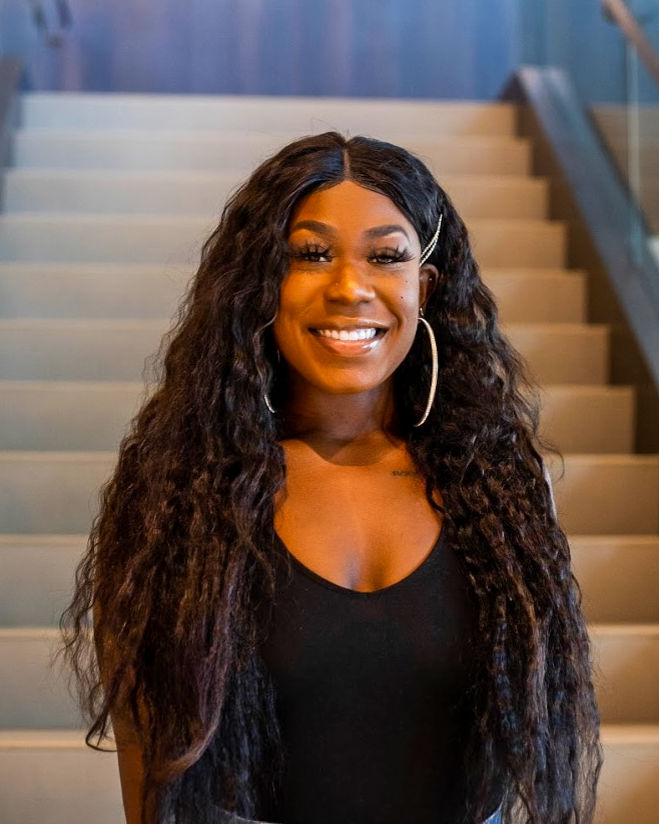This summer, public health senior Adaeze Omekam decided to start a Black Student Yearbook for Texas A&M. The yearbook will include black history at Texas A&M, recognize the accomplishments of current organizations relevant to the black community and student superlatives.
Omekam said she started the project because she was a passionate member of her high school yearbook committee. Moreover, she wanted there to be similar memorabilia for black accomplishments at A&M.
“I narrowed it down to being a black student yearbook because I feel like black students at A&M do not get as much credibility as other races,” Omekam said. “It would be nice to have something to look back on and see the impact that we’ve made at the university.”
Immediately after talking the idea over with a friend, Omekam went online and looked up how to start an organization at A&M. She then began the process of becoming a recognized organization. What gave the yearbook the most attention, she said, was the Twitter account she created.
“Starting the Twitter was nice. When I started the Twitter, I also put out that there were open positions,” Omekam said. “The idea of the yearbook, in general, made people want to be a part of it because, as well as us having a yearbook to look back on, we are also doing it for a good cause.”
Omekam said that every year, the yearbook proceeds will go to a charity or nonprofit that benefits the black community. In the future, she said the charity each year will be selected via poll.
“Since this is the first year, I decided I wanted to [give the money] to the Matthew Gaines statue that is being built,” Omekam said. “The Matthew Gaines Initiative is a new organization as well, trying to build a statue on campus. I thought it would be a good idea for us to help them raise money because this would be making history in our black community as well.”
It was both the organization’s support of the Matthew Gaines Initiative and its mission for the black community that made education sophomore Alexia Williams want to join as a photographer.
“They made a Twitter page and made everyone know who they were and what they were for,” Williams said. “I had never heard of something like that. What really got my attention was their support for the Matthew Gaines program. That was my major calling for this organization.”
Williams said Omekam’s efforts for the yearbook play a vital role in the success. One of Omekam’s goals for the photographers is to take a picture of every black student in the community that would like to be recognized. There will be highlights of all of the different black organizations and even a superlative page with tags such as “fashionista” or “best friends.”
“[Adaeze] mentioned that this is a way for freshmen or people coming in from another school that are black to…[see] what our community is about and let them know that we are a family,” Williams said. “I think what she is doing is very amazing.”
Some other goals of the Black Student Yearbook are to sell 100 yearbooks by the end of the spring semester and establish the yearbook as a permanent fixture at A&M. They also want to include segments on black history at A&M and in Texas.
“I think the most important part of the Black Student Yearbook is that we are actually putting ourselves out there in a very permanent way,” Williams said. “I never know about many accomplishments unless I hear it from other black students. I do think it is something that will congratulate more black people on what they are doing.”
Society, ethics and law sophomore Cyana Stubblefield joined the Black Student Yearbook right after it became an official organization. She said that because A&M is a predominantly white institution, others overlook many accomplishments of black students.
“[The yearbook] can represent that you can do anything no matter where you are from or who you are,” Stubblefield said. “[We] are going to notice you, and make you confident in what you do and what you have accomplished.”
Stubblefield said she hopes the most significant influence of the yearbook is to acknowledge minorities and make sure that others do not overlook their accomplishments.
“This yearbook is kind of a start to show that [A&M] needs to do more — we all need to do more — to show that minorities are here and that they make a difference,” Stubblefield said.
Black Student Yearbook looks to highlight A&M’s African-American community
October 13, 2019
Photo by Provided
Public health senior Adaeze Omekam founded the Black Student Yearbook.
0
Donate to The Battalion
$2065
$5000
Contributed
Our Goal
Your donation will support the student journalists of Texas A&M University - College Station. Your contribution will allow us to purchase equipment and cover our annual website hosting costs, in addition to paying freelance staffers for their work, travel costs for coverage and more!
More to Discover









